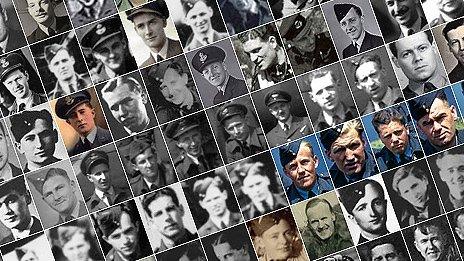Historic Lancasters' tandem flight takes place in Lincolnshire
- Published
The two Lancasters were the first to fly in formation for more than 50 years
Two World War Two Lancasters have flown together for the first time in 50 years.
The Battle of Britain Memorial Flight's aircraft was joined by the only other airworthy example, which had crossed the Atlantic to Lincolnshire.
The pair was due to pass over Lincoln cathedral last Friday but the flight was postponed due to bad weather.
A series of practice flights near RAF Coningsby will now be performed ahead of a month of events across the UK.

The two aircraft will be taking part in more than 60 events and flypasts during the summer
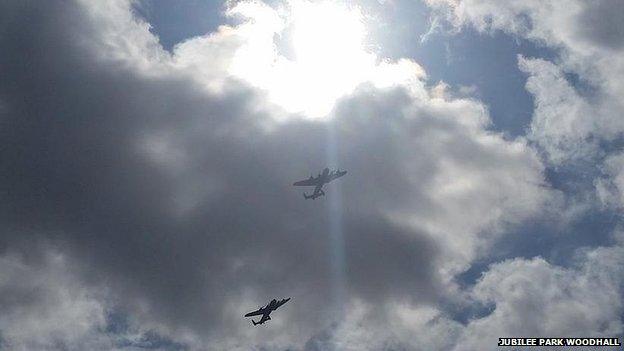
The Canadian Lancaster was restored by a team of volunteers over 11 years
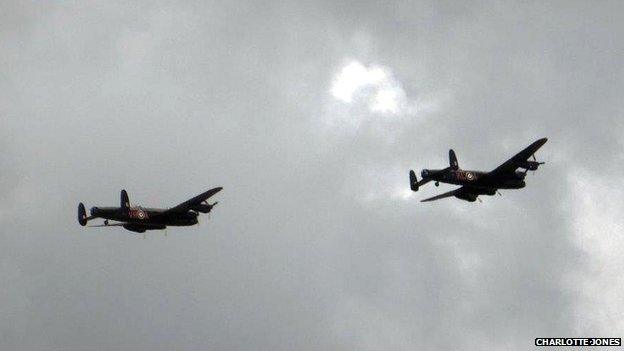
Crowds of enthusiasts and passers-by stopped to watch as the aircraft began a series of circuits
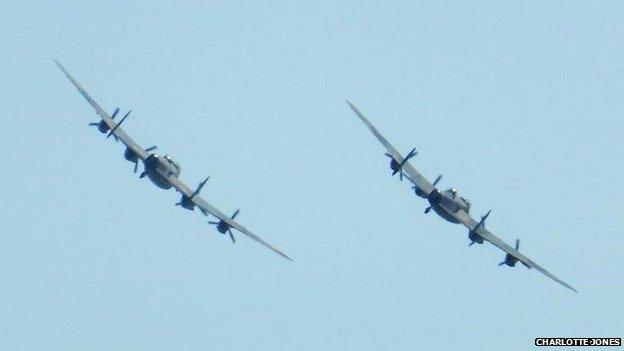
Lincolnshire was so dominated by airfields during World War 2 it was known as Bomber County
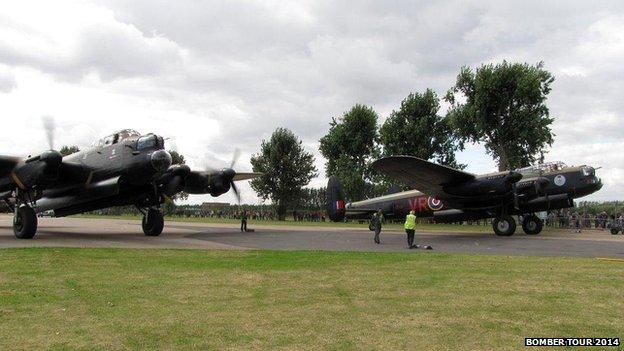
The two aircraft flew for just under an hour but will be taking part in several more practice sorties
Following a day of maintenance checks after its 3,700-mile journey, the Canadian Lancaster, known as Vera, took off alone on Tuesday evening.
Once this flight was completed successfully, clearance was given for both to fly together.

The Lancaster bomber
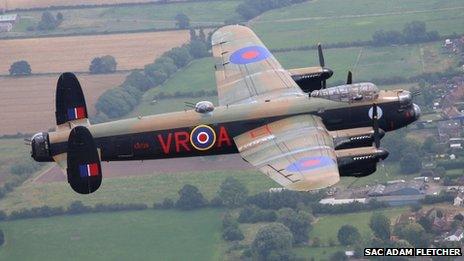
The Lancaster bomber was designed by Roy Chadwick who was born in Farnworth, near Widnes, in 1893
About 7,300 Lancasters were built during World War Two but most of those that survived the fighting were scrapped
The aircraft is best known for its part in attacking German dams in 1943, later turned into The Dam Busters film
The last time two or more Lancasters flew together is believed to have been in Canada in 1964
Watch: Dambusters crew member speaking about the daring mission

Large crowds gathered outside the airbase for the double take-off, which took place just after 13:00 BST.
The first aircraft to take to the skies was one of the Battle of Britain Memorial Flight's Spitfires, it was then joined first by the British Lancaster, and finally Vera.
They were in the air for just under an hour but will fly a number of further training sessions.
Stuart Reid, former Battle of Britain Memorial Flight pilot and aviation historian, said: "This will take some getting used to for the pilots. These are big, heavy aircraft and flying together is hard work.
"The first Lancaster will have a relatively straightforward job but the one behind will have to keep in line, watch the other, handle the buffeting from the slipstream.
"Hats off to them, especially in this wind."
Stan Instone, who was a Lancaster flight engineer in 419 Squadron, was among the crowd.
"The hairs on the back of my neck have stood up - that's what the sound of those Lancasters does to me.
"I wouldn't have believed it was possible. There has been talk about getting them together for years and now, it has come true," he said.
The first public display is scheduled to be at Eastbourne International Air Show on Thursday.
- Published13 August 2014

- Published8 August 2014
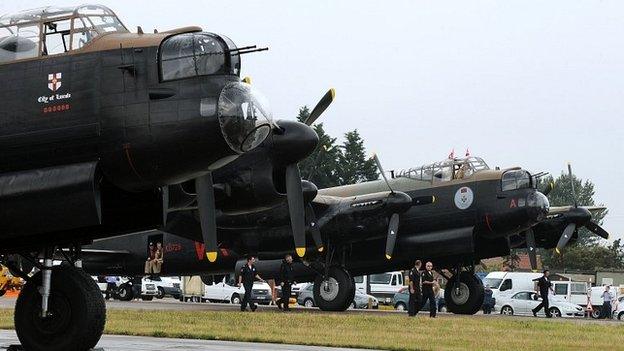
- Published7 August 2014
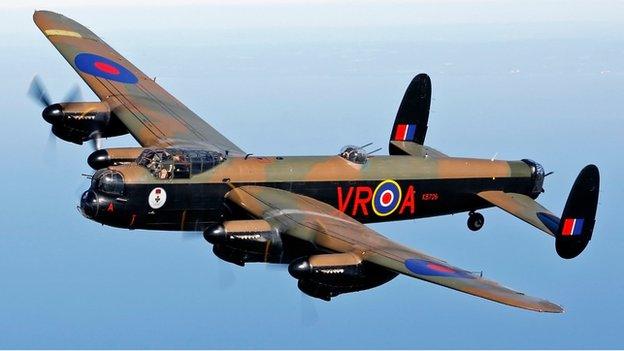
- Published2 September 2013
